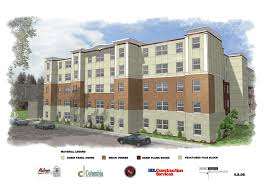 A gorgeous $50+ million commercial construction loan was entered into C-Loans.com today, and I personally brought it to the attention of the largest commercial mortgage company in the country. These are the guys who close 40% to 50% of all of the commercial loans over $30 million.
A gorgeous $50+ million commercial construction loan was entered into C-Loans.com today, and I personally brought it to the attention of the largest commercial mortgage company in the country. These are the guys who close 40% to 50% of all of the commercial loans over $30 million.
I seldom personally place the commercial loans entered into C-Loans.com, but there are green flags that really get my greed gland - an ugly goider on the right side of my neck - pulsating and glowing with a florescent internet green. "This deal smells like a BIG fee!"
Okay, so what did I spot? What triggered my ugly but reliable greed gland? I called my son, Tom, today, and I asked him, "Hey son, a big commercial construction loan request was just entered into C-Loans, and I am all hot and bothered. What did I spot?"
Answer: The developer attached an architect's rendering!
Guys, every commercial construction loan request larger than $10 million absolutely needs an architect's rendering if the developer really expects to ever get the deal funded.
The fact that this developer included an architect's rendering meant:
1. This developer is experienced.
2. The developer is not trying to pinch pennies; i.e., he has enough dough to pay $2,000 to $3,000 for an architect's rendering.

Then I asked my son, as a review, what four elements are included in Total Construction Cost?
Answer: Land Cost, Hard Costs, Soft Costs, and a Contingency Reserve.
Okay, but how do you compute the Contingency Reserve?
Answer: The Contingency Reserve should be 5% of hard and soft costs. It's a special line item in the Construction Loan Budget designed to cover cost overruns.
But why only 5% of hard costs and soft costs? What about 5% of the land costs?
Answer: By this point, the cost of the land has already been fixed. It has either already been purchased, or it is already in contract. There shouldn't be any overruns on the cost of the land.
Okay, Mr. Smarty Pants, what percentage of the Total Construction Cost do most banks expects a developer to contribute to the deal? In other words, how much skin in the deal is the developer typically required to contribute?
Answer: Typically the developer is required to cover 20% of the total cost of the project. Usually this takes the form of equity / downpayment in the land, architect's fees and engineering fees.
The general rule is that construction lenders expect the developer to contribute the land to the deal free and clear. After all, in most cases, the land cost equals about 20% of the total cost of the project.
In real life, this seldom happens; however, between the developer's equity in the land, his prepaid architect's fees, and his prepaid engineering fees, the successful developer does indeed contribute 20% of the total cost of the project.
Pop quiz: A developer comes to you for a land loan. He paid $1 million in cash for the land. He needs a $400,000 land loan for the architect's fees and engineering fees. He promises that he will pay off the land loan when he gets a construction loan. (Angelica, my precious head of Loan Committee, this lesson is for you.) Is this a good land loan?
Well, we said that the land cost is usually 20% of the total cost of a commercial construction project. If the land cost is $1 million (20%), then the total project cost is probably around $5 million. If the developer spends $400,000 on architect's fees and engineering fees (the real number will probably be less), then the developer is contributing $600,000 in equity in the land, $200,000 in prepaid architect's fees, and $200,000 for prepaid engineering fees. The developer is therefore contributing $1 million or 20% of the total cost of the project! This is a good land loan! Yeah!! :-)

By the way, the Great Recession is over. Blackburne & Sons made very few land loans leading up to the Great Recession, but we are very bullish on land loans right now.
Okay, we are now going back to the $50 million commercial commercial loan request that just entered C-Loans. The developer wrote that he had $5 million in cash to contribute to the project.
"Hey, wait a minute, George. I thought you just said that the developer is required to contribute 20% of the total cost of a construction project? This is a $50 million project. The developer should be required to contribute $10 million, right?"
Well, on the really large commercial construction loans ($30MM+), most developers lack the cash required to cover a full 20% of the cost of the project. C'mon, really, who has $10 million to contribute to a commercial real estate construction project? I doubt that even Donald Trump contributes $10 million in cash to any of his commercial construction deals.
Okay, so what happens in real life on these huge commercial construction loan requests? The developer will typically be required to cover 7% to 10% of the total cost of any $30+ million commercial construction project. The rest will typically be covered by venture equity.
Venture equity is like venture capital, except it is for real estate projects. Venture equity investors provide the equity shortfalls to developers on large commercial construction deals. Venture equity investors typically expect total returns of 16% to 20%. A typical venture equity investor might require a 10% preferred return, plus 50% of the total profit in a construction deal.
Okay, I have my son, Tom , pinned against the ropes. He has been reading my blogs for years. He can't run.
So what is a capital stack?
Answer by Tom (that clever little devil): A capital stack is the sum, on a huge commercial mortgage deal, of the first mortgage, plus the mezzanine loan, plus the preferred equity, plus the venture equity, plus the the developer's position in the deal.
Got a commercial mortgage deal that has the tiniest black hair (flaw)?
Keep looking for the business card of any banker who is making commercial loans. You can parlay the contents of that one business card for a list of over 2,000 commercial real estate lenders. We solicit these bankers for their commercial mortgage turndowns.
Are you a commercial real estate broker? In other words, you sell commercial real estate. What I am about to tell you is the most important thing that you will EVER learn about commercial real estate. Are you ready? The easiest way to meet high-net-worth real estate investors is to become - on the side - a commercial motgage broker. After all, who owns $5 million shopping centers? Poor folks?
Did you learn a lot today about about commercial real estate finance? You can receive similar training articles about commercial real estte finance several times per week for free.
Do you have a buddy - perhaps a co-worker in your office - who would benefit from free training in commercial real estate finance?









